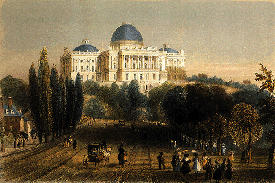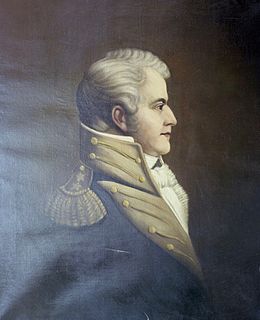
The Nineteenth United States Congress was a meeting of the legislative branch of the United States federal government, consisting of the United States Senate and the United States House of Representatives. It met in Washington, D.C. from March 4, 1825, to March 4, 1827, during the first two years of the administration of U.S. President John Quincy Adams. The apportionment of seats in the House of Representatives was based on the Fourth Census of the United States in 1820. The Senate had a majority of Jackson Men, while the House had an Anti-Jackson (pro-Adams) majority.

Events from the year 1889 in Canada.

Events from the year 1902 in Canada.

Benjamin Smith was the 16th Governor of the U.S. state of North Carolina from 1810 to 1811.
Abraham Jude Williams was an American politician from Boone County, Missouri. He was the third Governor of Missouri, serving an unelected interim term in 1825 and 1826 following the death of Frederick Bates.

Elections to the United States House of Representatives for the 20th Congress were held at various dates in each state in 1826 and 1827 during John Quincy Adams' term in office.

Zadok Casey was an American politician who served as a U.S. Representative from Illinois from 1833 to 1843. He founded the city of Mount Vernon around 1817. He was elected to the Illinois House of Representatives in 1822 and to the Illinois State Senate in 1826, and was elected the fourth Lieutenant Governor in 1830. He served in the Twenty-third United States Congress (1833) through the Twenty-seventh United States Congress (1843). He was a Jacksonian Democrat, and he was elected to his final term as an Independent Democrat. He again served in the Illinois House from 1848 to 1852, serving as speaker in 1852, and in the State Senate from 1860 to 1862.

Richard Irvine Manning I was the 50th Governor of South Carolina from 1824 to 1826 and was later a Representative in the United States Congress.

John Lyde Wilson was the 49th Governor of South Carolina from 1822 to 1824 and an ardent supporter of dueling.

John Rutherfoord was a U.S. political figure. He served as Acting Governor of Virginia between 1841 and 1842. He was the brother-in-law of Edward Coles.

The 1826 New York gubernatorial election was held from November 6 to 8, 1826, to elect the Governor and the Lieutenant Governor. Incumbent Governor DeWitt Clinton was elected to a second term as governor, and Nathaniel Pitcher, the running mate of his opponent, was elected lieutenant governor.
The 1825/1826 United States Senate election in New York was held on February 1, 1825, and January 14, 1826, by the New York State Legislature to elect a U.S. Senator to represent the State of New York in the United States Senate.
The 1827 United States Senate election in New York was held on February 6, 1827, by the New York State Legislature to elect a U.S. Senator to represent the State of New York in the United States Senate.
The 1831 United States Senate election in New York was held on February 1, 1831, by the New York State Legislature to elect a U.S. Senator to represent the State of New York in the United States Senate.

The Illinois gubernatorial election of 1826 was the third quadrennial election for this office. former Territorial Governor Ninian Edwards was elected with a 49% plurality. State senator Thomas Sloo, Jr. came in second and Former Lieutenant Governor Adolphus Hubbard came in third.

The 50th New York State Legislature, consisting of the New York State Senate and the New York State Assembly, met from January 2 to December 4, 1827, during the third year of DeWitt Clinton's second tenure as Governor of New York, in Albany.
A special election was held in Maryland's 2nd congressional district on February 1, 1826 to fill a vacancy caused by the resignation of Joseph Kent (A), who had been elected Governor of Maryland.
A special election was held in Georgia's 2nd congressional district in 1827 to fill a vacancy caused by the resignation of John Forsyth (J).
The 1826 United States elections occurred in the middle of Democratic-Republican President John Quincy Adams's term. Members of the 20th United States Congress were chosen in this election. The election took place during a transitional period between the First Party System and the Second Party System. With the Federalist Party no longer active as a major political party, the major split in Congress was between supporters of Adams and supporters of Andrew Jackson, who Adams had defeated in the 1824 Presidential election.















